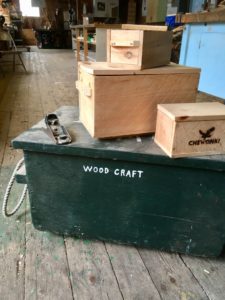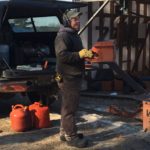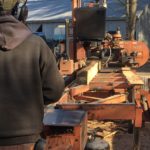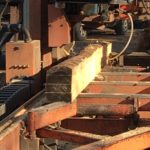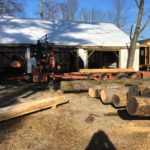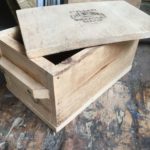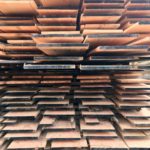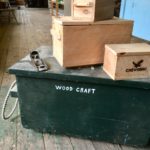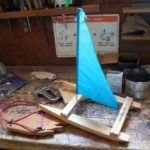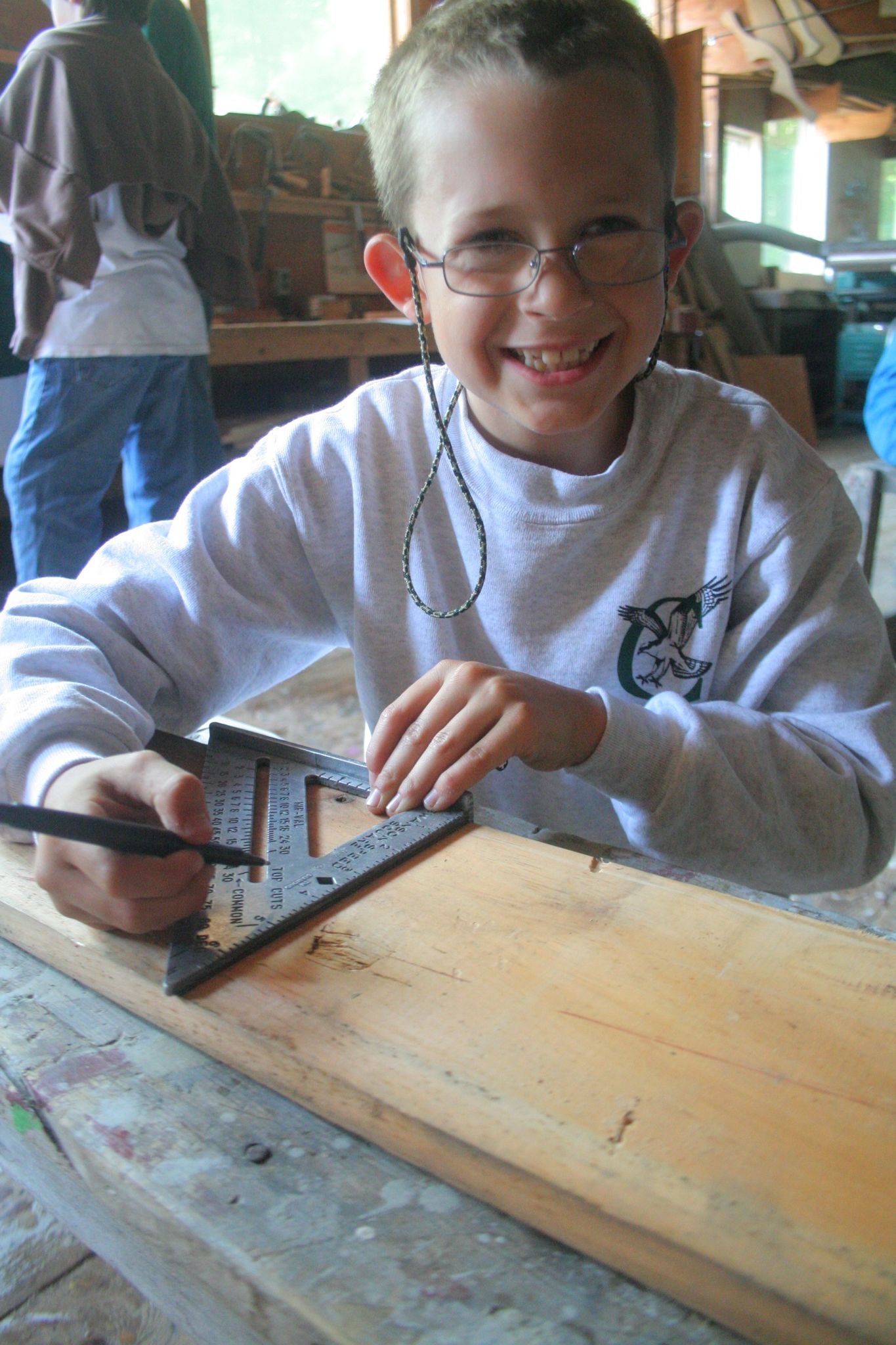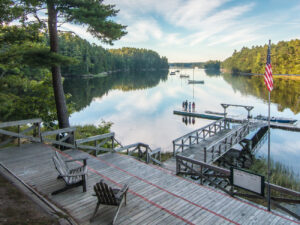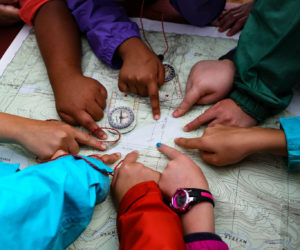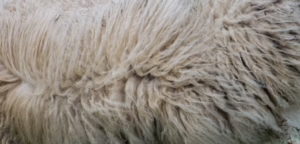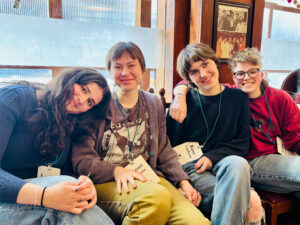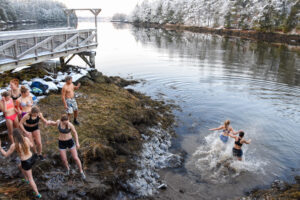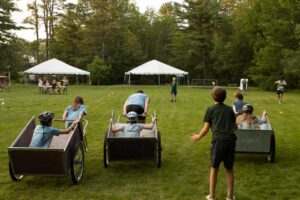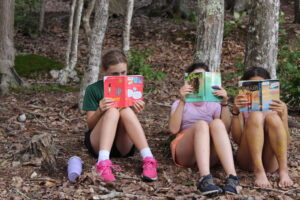Standing at the head of his portable sawmill, stationed in front of the Whitehouse, Mike Reed, a sawyer from Nobleboro, Maine, is sawing boards from white pines harvested on Chewonki Neck, transforming tree trunks into 2”- and ½”-lumber that Camp Chewonki boys will use next summer to make miniature wanigans*, toy boats, birdhouses, and other items to carry home alongside sleeping bags, sneakers, and camp T-shirts.
A wanigan (sometimes spelled “wanagan,” “wanagin,” or “wan-gan”) is a box in which canoe adventurers carry food and cooking and/or fragile equipment. It fits snugly inside a canoe and has rope handles on either end to make lifting easy. A canoe with a wanigan is a bit like a cowboy chuck wagon.
The word originated from the Ojibwa tribe of native people around Lake Superior and first referred to a shelter for humans. Midwestern natives later began using it to describe a shelter for food being transported by canoe.
Chewonki Senior Vice President Greg Shute, our local wanigan expert, has unwittingly developed a global reputation. We recently noticed that the Merriam-Webster dictionary gives this example of proper word usage: “At Chewonki, a 100-year-old outdoor education camp in Wiscasset, Me., Greg Shute has been teaching children how to bake cakes in reflector ovens and pack a proper wanigan (a gear box designed to fit in a canoe) for 33 years.”— Kim Severson, New York Times, “Upscale Food and Gear Bring Campsite Cooking Out of the Wild,” 26 June 2017
Scott Peterson, former manager of the Chewonki boat shop and wood shop (and a Maine Coast Semester at Chewonki alumnus), first brought Reed and his sawmill here in 2011 after he realized that some of the trees we harvested might serve a higher purpose. Peterson, who now lives in California, remembers, “I would spy good sections of wood in the trees being felled around Chewonki Neck for firewood or to protect buildings [from falling limbs or trees], and I requested those sections be saved from the woodstove. The fellers [farmers and facilities staff] learned what I wanted and would haul trees to the log yard at the shop with the tractor or the horse or in some cases a gang of students (and in one case, via canoes around the Neck!).”

“White pine and red oak–these two fine local species are perfect for most softwood and hardwood needs around Chewonki, including camper and student projects,” says Peterson. “Mini-wanigans are a camp favorite to build, 1/2”-thick pine being ideal. That stuff’s a dream. Dries in just a few months. Nothing beats thin pine for small projects, and you can’t find rough lumber milled that thin at lumber yards…It is a perfect stockpile to have around for campers wandering into the shop with an idea to build any and everything.”
In the past, Reed and Peterson also milled some cedar, ash, locust, or apple wood from Chewonki Neck trees “for the ambitious Maine Coast Semester student who wants to help with a boat repair, make a set of serving spoons, a surfboard, or a hockey stick,” says Peterson.
“What a luck to have such a healthy, giving forest and the tools and human energy to convert its bounty into useful and beautiful things, year after year,” says Peterson.
Reed is running his saw while facilities staff member Orville Mooney maneuvers on a bright-orange tractor to deliver logs cut from the east side pasture restoration project.
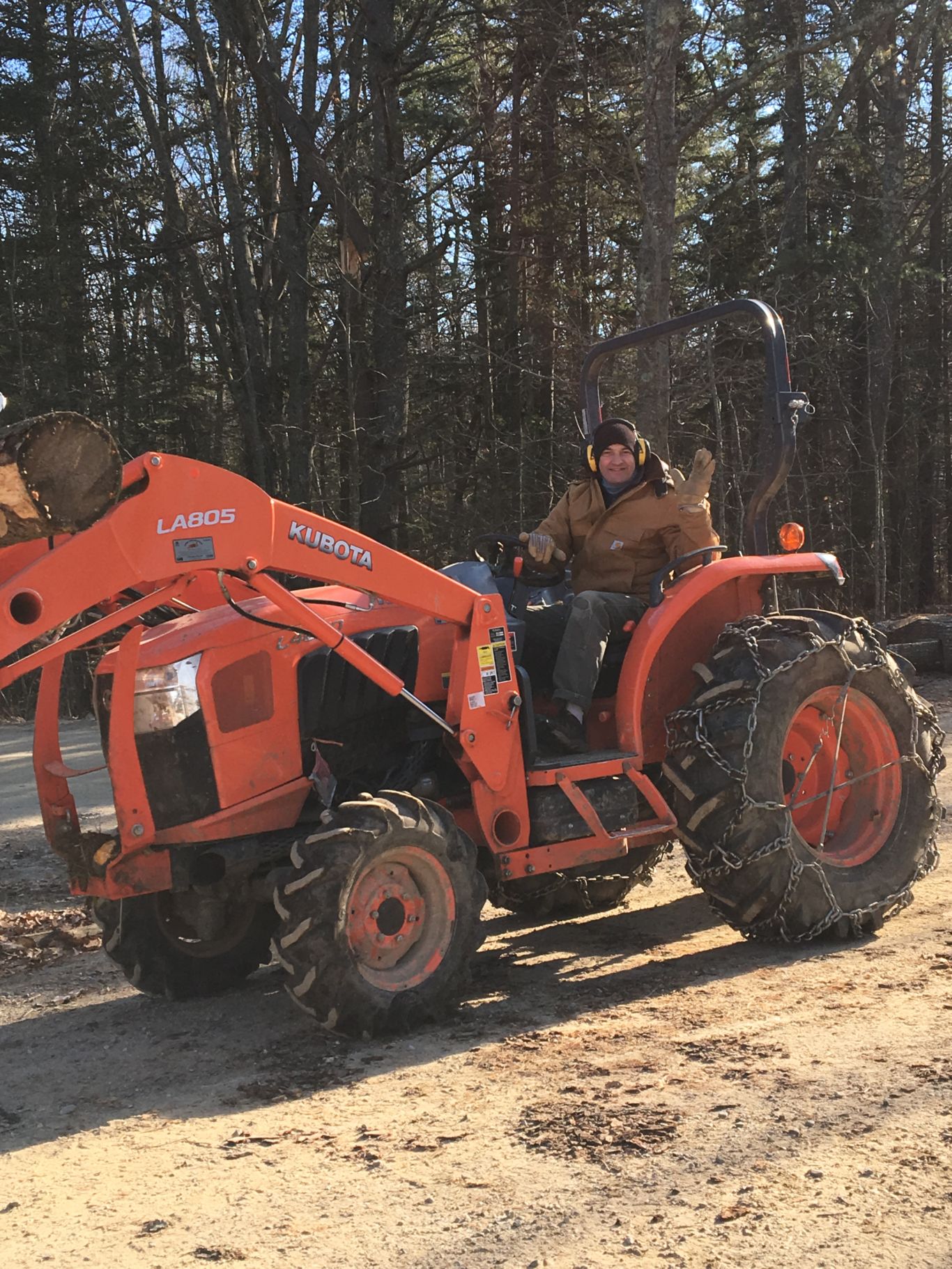
Along with wood for campers and students, Reed is also cutting oak trunks into 1¼” boards that the facilities team will use for maintenance projects when warm weather returns. On the shortest days of the year, we are getting ready for the longest days of the year.
Come, summer!
